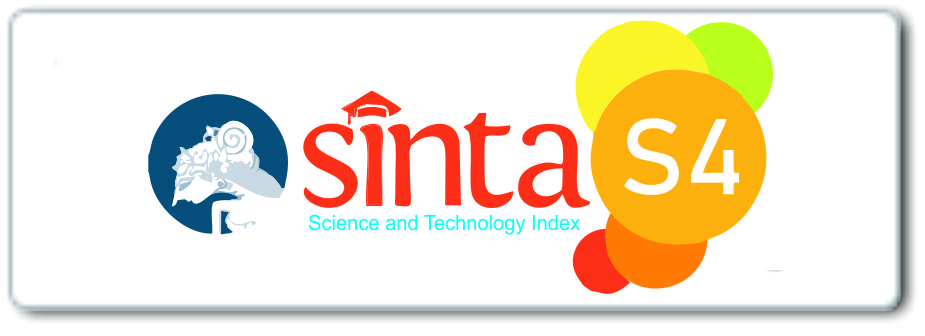Enhancing Elementary Students’ Learning Motivation through Augmented Reality-Based Educational Media: A Developmental Study
DOI:
https://doi.org/10.56988/chiprof.v4i1.94Keywords:
Augmented Reality, Educational Technology, Elementary Education, Learning Motivation, Student EngagementAbstract
In the digital era, traditional teaching methods often struggle to engage students effectively, decreasing motivation and learning outcomes. This study aims to develop and implement an Augmented Reality (AR)-based educational media to enhance students' motivation in elementary schools. The research applied a developmental approach consisting of planning, design, development, implementation, and evaluation stages. Data was collected through interviews with teachers and students, classroom observation, motivation questionnaires, and pre-and post-tests. The findings revealed a significant improvement in students' motivation, engagement, emotional involvement, and academic understanding after using the AR media. Students reported increased interest, enjoyment, and ease in grasping complex concepts. Teachers acknowledged AR's role in making learning more interactive and visually engaging. Despite initial technical challenges, students adapted quickly. This study highlights the potential of AR in transforming the learning environment and recommends broader integration of AR technology in educational settings to foster more engaging and compelling learning experiences.
Downloads
References
N. F. Saidin, N. D. A. Halim, and N. Yahaya, “A review of research on augmented reality in education: Advantages and applications,” Int. Educ. Stud., vol. 8, no. 13, pp. 1–8, 2015, doi: 10.5539/ies.v8n13p1.
A. J. Cavell, “A rapid method for the determination of nitrogen, phosphorus and potassium in plant materials,” J. Sci. Food Agric., vol. 5, no. 4, pp. 195–200, 1954, doi: 10.1002/jsfa.2740050407.
Y. Erita, Y. Miaz, J. Jupriani, S. Hevria, and R. Fauzi, “Using Virtual Reality to Enhance Twenty-First-Century Skills in Elementary School Students: A Systematic Literature Review,” Open Educ. Stud., vol. 6, no. 1, 2024, doi: 10.1515/edu-2024-0030.
E. E. Şimşek, “The Use of Augmented Reality-Supported Activities in Environmental Education for Early Childhood: A Quasi-Experimental Study,” Sustain., vol. 16, no. 23, 2024, doi: 10.3390/su162310374.
M. Bower, C. Howe, N. McCredie, A. Robinson, and D. Grover, “Augmented Reality in education - cases, places and potentials,” EMI. Educ. Media Int., vol. 51, no. 1, pp. 1–15, 2014, doi: 10.1080/09523987.2014.889400.
K. H. Cheng and C. C. Tsai, “Affordances of Augmented Reality in Science Learning: Suggestions for Future Research,” J. Sci. Educ. Technol., vol. 22, no. 4, pp. 449–462, 2013, doi: 10.1007/s10956-012-9405-9.
H. K. Wu, S. W. Y. Lee, H. Y. Chang, and J. C. Liang, “Current status, opportunities and challenges of augmented reality in education,” Comput. Educ., vol. 62, pp. 41–49, 2013, doi: 10.1016/j.compedu.2012.10.024.
E. N. Qorimah, W. C. Laksono, Y. M. Hidayati, and A. Desstya, “Kebutuhan Pengembangan Media Pembelajaran Berbasis Augmented Reality (AR) pada Materi Rantai Makanan,” J. Pedagog. dan Pembelajaran, vol. 5, no. 1, pp. 57–63, 2022, doi: 10.23887/jp2.v5i1.46290.
N. S. Mohd Nabil, H. Nordin, and F. Ab Rahman, “Immersive language learning: evaluating augmented reality filter for ESL speaking fluency teaching,” J. Res. Innov. Teach. Learn., vol. 17, no. 2, pp. 182–195, 2024, doi: 10.1108/JRIT-04-2024-0111.
D. Mursyidah and E. R. Saputra, “Aplikasi Berbasis Augmented Reality sebagai Upaya Pengenalan Bangun Ruang bagi Siswa Sekolah Dasar,” J. Pendidik. Dasar J. Tunas Nusant., vol. 4, no. 1, pp. 427–433, 2022, [Online]. Available: https://ejournal.unisnu.ac.id/jtn/article/view/2941
I. G. N. Puger et al., “Metacognition-Based Learning Model: Improving Agile Innovation And Critical Thinking Skills Of Students In Science Learning In Elementary Schools,” J. Pendidik. IPA Indones., vol. 13, no. 2, pp. 255–264, 2024, doi: 10.15294/jpii.v13i2.1375.
E. Gkintoni, H. Antonopoulou, A. Sortwell, and C. Halkiopoulos, “Challenging Cognitive Load Theory: The Role of Educational Neuroscience and Artificial Intelligence in Redefining Learning Efficacy,” Brain Sci., vol. 15, no. 2, 2025, doi: 10.3390/brainsci15020203.
A. S. Mandala, L. Anwar, C. Sa’dijah, and H. Zulnaidi, “Development of mobile augmented reality-based geometry learning games to facilitate spatial reasoning,” Infin. J., vol. 14, no. 2, pp. 323–348, 2025, doi: 10.22460/infinity.v14i2.p323-348.
M. Hakiki et al., “Effectiveness of Android-Based Mobile Learning in Graphic Design Course for Digital Learning: The Development Research Study,” Int. J. Inf. Educ. Technol., vol. 14, no. 4, pp. 602–611, 2024, doi: 10.18178/ijiet.2024.14.4.2083.
S. Pérez-Muñoz, R. Castaño Calle, P. T. Morales Campo, and A. Rodríguez-Cayetano, “A Systematic Review of the Use and Effect of Virtual Reality, Augmented Reality and Mixed Reality in Physical Education,” Inf., vol. 15, no. 9, 2024, doi: 10.3390/info15090582.
E. Voultsiou and L. Moussiades, A systematic review of AI, VR, and LLM applications in special education: Opportunities, challenges, and future directions, no. 0123456789. Springer US, 2025. doi: 10.1007/s10639-025-13550-4.
J. Sweller, “Cognitive load during problem solving: Effects on learning,” Cogn. Sci., vol. 12, no. 2, pp. 257–285, 1988, doi: 10.1016/0364-0213(88)90023-7.
R. Adolph, “済無No Title No Title No Title,” pp. 1–23, 2016.
S. Alhebaishi, R. Stone, and M. Ameen, “Emotional Engagement and Teaching Innovations for Deep Learning and Retention in Education: A Literature Review,” Int. J. Adv. Comput. Sci. Appl., vol. 16, no. 3, pp. 35–45, 2025, doi: 10.14569/IJACSA.2025.0160304.
B. Direkci, M. Canbulat, and E. Nal, “duration on reading comprehension and cognitive load,” pp. 1445–1464, 2025.
A. Doulou, P. Pergantis, A. Drigas, and C. Skianis, “Managing ADHD Symptoms in Children Through the Use of Various Technology-Driven Serious Games: A Systematic Review,” Multimodal Technol. Interact., vol. 9, no. 1, pp. 1–26, 2025, doi: 10.3390/mti9010008.
W. A. Uno, “Pengembangan Media Pembelajaran Interaktif Berbasis Augmented Reality untuk Meningkatkan Pemahaman Konsep IPA,” J. Pendidik. dan Pembelajaran, vol. 4, no. 1, pp. 28–33, 2024.
S. D. Prasetya and Y. Anistyasari, “Studi Literatur Pengaruh Media Pembelajaran Berbasis Augmented Reality Markerless Terhadap Motivasi Belajar Siswa,” J. IT-EDU, vol. 05, no. 01, pp. 468–479, 2020.
J. Piaget, “Piaget When Thinking Begins10272012_0000.pdf,” 1952.
Downloads
Published
How to Cite
Issue
Section
License
Copyright (c) 2025 Aguscik, Fitri, Mutiara Lestari, Fatimah

This work is licensed under a Creative Commons Attribution-NonCommercial 4.0 International License.




















